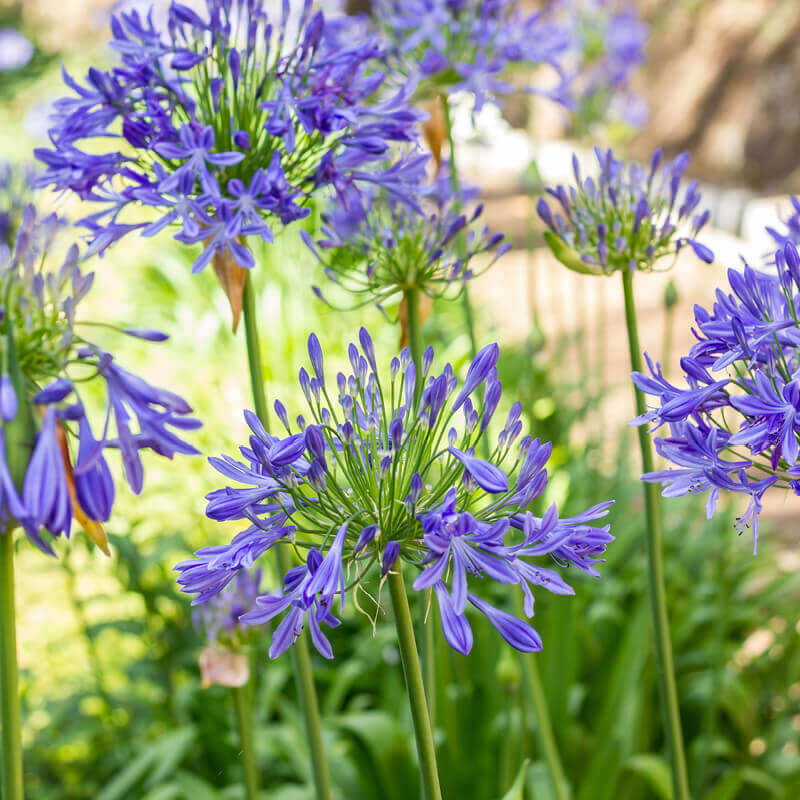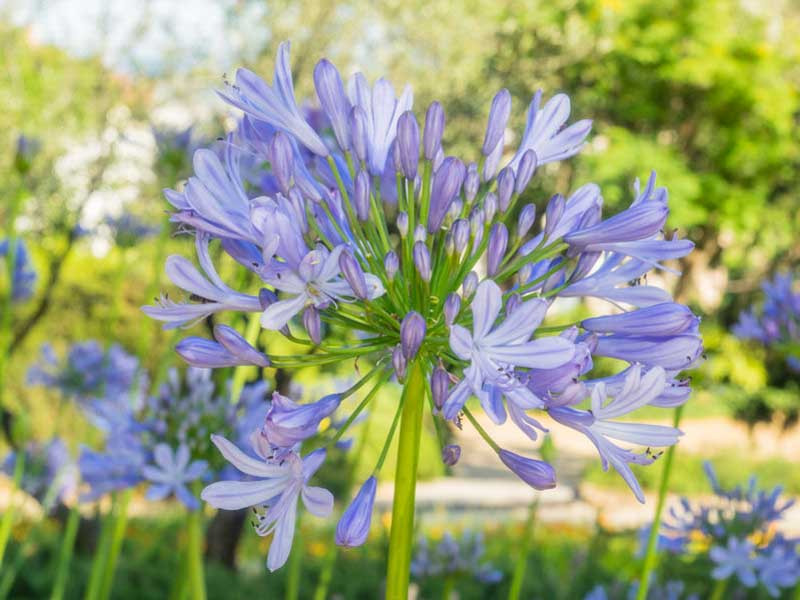Agapanthus Friend Plant Kingdoms: Perfect Pairings for Your Garden
Releasing the Secret to Successful Agapanthus Cultivation: Idea for a Flourishing Yard
In the realm of horticulture, cultivating agapanthus effectively needs a critical method that includes numerous facets of plant treatment. By understanding the subtleties of agapanthus growing, one can produce an environment where these plants thrive and flower perfectly.
Planting Agapanthus: Best Practices
When planting Agapanthus, appropriate soil preparation is necessary for guaranteeing successful development and advancement of these stunning flowers. Agapanthus, commonly called Lily of the Nile or African lily, flourishes in well-draining dirt with a somewhat acidic to neutral pH level - Agapanthus. Before planting, it is essential to change hefty clay dirts with natural issue such as garden compost or peat moss to enhance drain and provide crucial nutrients for the plants
To grow Agapanthus, select an area that gets full sunshine to partial color, as this will certainly advertise healthy and balanced development and plentiful blooming. Dig a hole twice the diameter of the plant's root sphere and place the Agapanthus at the exact same deepness it was previously growing. Delicately backfill the hole with soil, pressing down strongly to get rid of any type of air pockets around the origins.
Water the recently planted Agapanthus completely and remain to keep the dirt evenly damp, specifically during the plant's active growing period. Agapanthus. Using a balanced plant food once a month can even more sustain the plant's development and blooming. By following these best techniques for planting Agapanthus, you can develop a sensational screen of these exciting blossoms in your yard
Ideal Dirt Issues for Agapanthus
For ideal development and flowering success of Agapanthus plants, making certain the dirt problems are optimal is critical. Agapanthus grows in well-draining dirt with a somewhat acidic to neutral pH level ranging from 6.0 to 7.0. This type of dirt permits ample water drainage, preventing waterlogging which can cause root rot. To enhance soil drainage, think about including organic issue such as garden compost or peat moss when preparing the planting website. Furthermore, Agapanthus prefers dirt that is rich in nutrients, so incorporating a balanced plant food throughout the growing season can promote healthy and balanced development and dynamic blooms.

Watering and Fertilizing Tips
To make certain healthy growth and lively blossoms, appropriate watering and fertilizing techniques are crucial for effective Agapanthus growing. Agapanthus plants profit from routine watering, specifically during the growing season.
When it pertains to feeding Agapanthus, a well balanced plant food with equal components nitrogen, phosphorus, and potassium can be used in the spring to advertise healthy and balanced development and flowering. Slow-release fertilizers are perfect for providing nutrients progressively over an extensive duration. Prevent over-fertilizing, as this can result in extreme vegetation growth at the expenditure of blooms.
Furthermore, including raw material like garden compost into the soil can improve nutrient levels and boost dirt structure, assisting in the overall wellness of the Agapanthus plants. By complying with these watering and feeding ideas, garden enthusiasts can guarantee their Agapanthus plants thrive and generate magnificent display screens of flowers.
Pruning and Deadheading Strategies
Correct pruning and deadheading techniques play an important function in maintaining the wellness and appearances of Agapanthus plants, enhancing the essential practices of watering and feeding for successful farming. Trimming Agapanthus includes getting rid of spent flower heads, dead or yellowing leaves, and total shaping of the plant to promote better development. Deadheading, the procedure of removing discolored blossoms, not only improves the plant's look yet additionally encourages additional growing.
When deadheading Agapanthus, it is advisable to clip off the blossom stem at the base using sharp, clean shears. This procedure redirects the plant's energy from seed production back right into origin and vegetation growth, promoting a much healthier and extra robust plant. Regular deadheading can prolong the growing duration of Agapanthus and prevent self-seeding, which can result in congestion.
In click for source terms of pruning, Agapanthus typically benefits from a light trim after blossoming to clean up the plant and encourage fresh growth. Cutting down the invested flower stems and eliminating any type of broken or dead foliage aids keep the plant's vitality and overall look. Nonetheless, it is vital to avoid reducing right into the crown of the plant, as site this can weaken its health.

Protecting Agapanthus From Pests and Diseases
Applying reliable insect and disease monitoring methods is important to protecting the health and vigor of Agapanthus plants in growing. Agapanthus are usually sturdy plants, but they can still drop sufferer to various bugs and diseases if not properly looked after. One common insect that impacts Agapanthus is the Agapanthus borer, a caterpillar that passages right into the plant, triggering damages to the leaves and blossoms. To protect against infestations, normal assessment of the plants is important. If borers are identified, they can be manually gotten rid of, or insecticidal soap can be utilized as a control action.
In addition to this article bugs, Agapanthus are at risk to illness such as origin rot and fungal leaf areas. These issues can usually be avoided by making certain proper water drainage and staying clear of overwatering. If indicators of disease appear, affected components of the plant need to be promptly eliminated to stop further spread. Fungicides might additionally be made use of as a treatment procedure, adhering to the supplier's instructions thoroughly. By remaining alert and resolving insect and illness problems quickly, gardeners can assist their Agapanthus flourish and thrive.

Conclusion
Finally, successful growing of agapanthus calls for proper planting strategies, perfect dirt problems, sufficient watering and feeding, normal pruning and deadheading, and security from diseases and insects. By adhering to these techniques and pointers, gardeners can guarantee a flourishing yard full of gorgeous agapanthus flowers. Agapanthus. Bear in mind to maintain consistent care and interest to information to advertise the wellness and longevity of these sensational plants
When growing Agapanthus, correct dirt preparation is important for making sure effective growth and advancement of these attractive flowers.Water the recently planted Agapanthus completely and continue to keep the soil uniformly damp, specifically throughout the plant's energetic expanding season.For ideal growth and blooming success of Agapanthus plants, guaranteeing the soil conditions are excellent is important. When growing or transplanting Agapanthus, make certain the dirt is well-prepared to offer the required structure for the plants to develop themselves efficiently. One usual bug that impacts Agapanthus is the Agapanthus borer, a caterpillar that tunnels into the plant, creating damages to the fallen leaves and flowers.